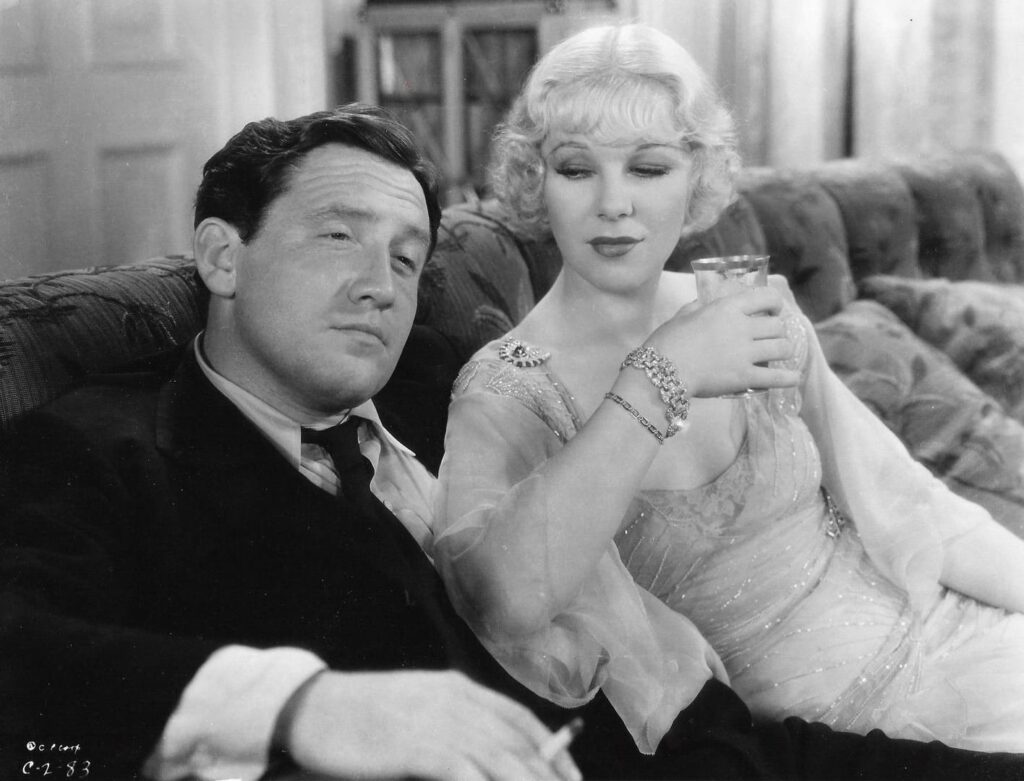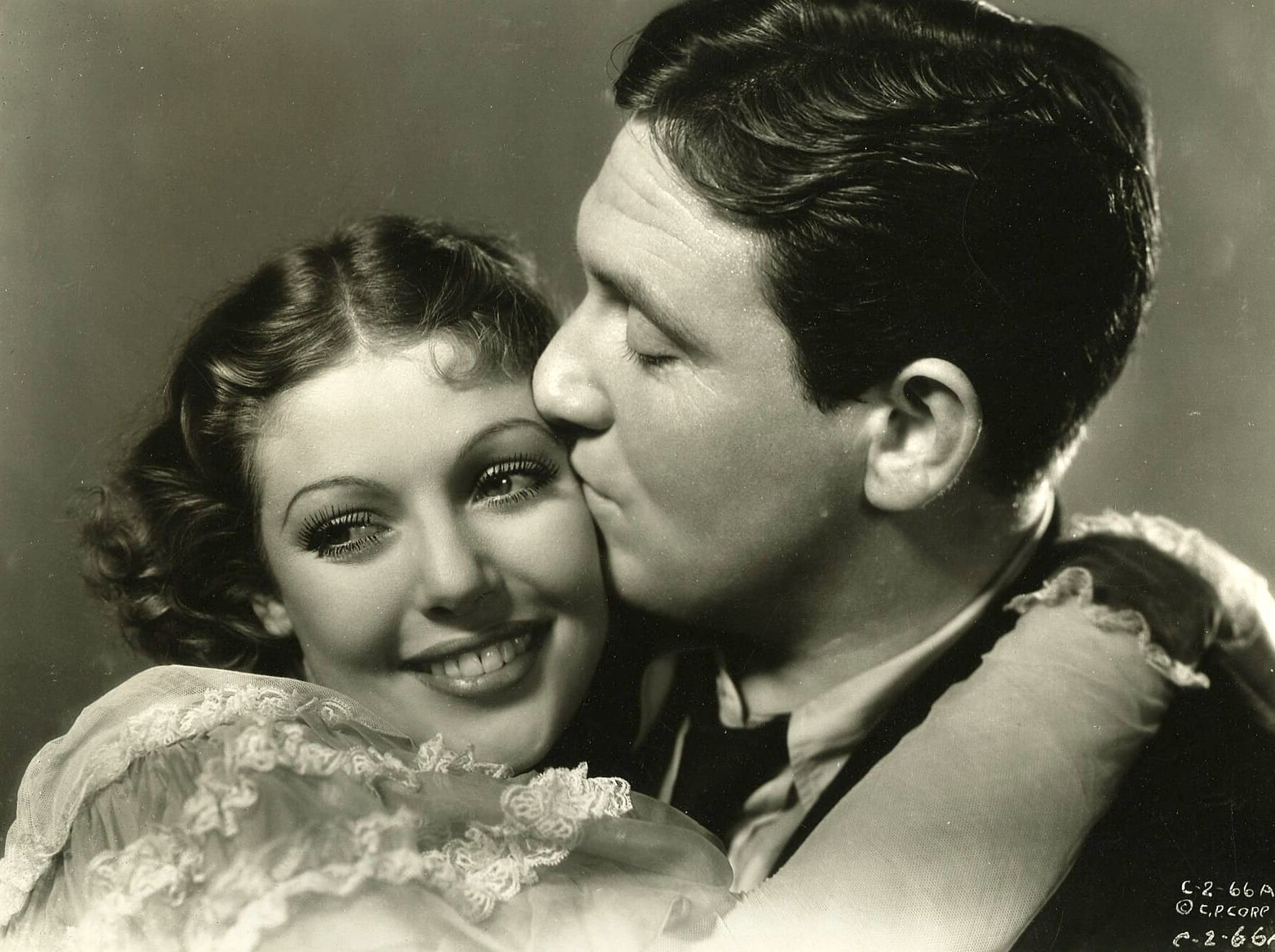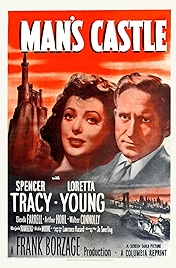There’s something a bit mad and a bit magical about Man’s Castle, one of the lesser known of director Frank Borzage’s movies. Expert at delivering dramas with complicated romantic relationships at their core, Borzage’s 1933 movie fits snugly alongside the likes of 1928’s Street Angel, 1932’s A Farewell to Arms and 1936’s Desire.
A 1933 release means Man’s Castle arrived just as the Production Code was coming into effect. It was released again in 1938, off the back of the heightened fame of its star Spencer Tracy, by which time the Code was fully operational. If the version you are watching is 75 minutes long, you have the 1933 version. If it’s 66 minutes, you have 1938’s. The difference is about nine minutes of material considered fine when the film was made but which was beyond the pail five years later. The raunch, sex, nudity, prostitution, cohabiting and a child out of wedlock are all still there in the bowdlerised version, you just have to look a bit harder to find them.
You won’t hear the word “Depression” either, though this is a classic Depression-era movie actually depicting what it was like for the 12 million jobless Americans (Jo Swerling’s screenplay informs us) looking for work in the wake of the 1929 Wall Street Crash.
The focus is on two of them, a starving and naive young woman called Trina (Loretta Young) and Bill (Tracy), the hustler who picks her up on the street, takes her to a fancy restaurant and feeds her, then reveals that, in spite of his fancy top hat, white tie and tails, he is also broke, and lives in a shanty town down near the Hudson River.
The two shack up together, out of necessity rather than anything else, and she immediately starts making plans for the life they might have together, of simple domesticity, while he, a “bindlestiff” (ie a hobo), doesn’t know whether he should embrace this beauty and tell her he loves her or jump on the next freight car out of town.
As well as will he/won’t he romance there is comedy to a screwball rhythm, usually featuring Tracy – being balled at by a Little League kid (Dickie Moore) for fumbling a throw, or serving a summons to a nightclub singer while she’s doing her act (a moment of sheer brilliance). Later, he and the singer, Fay La Rue (Glenda Farrell), will have an assignation in her room, at which point the censor in 1938 got very hands-on with the print.

Bill and Trina are hardly representative of the vast swathe of unemployed Americans thrown onto the scrap heap – this gruff, closed-down old salt and the pretty ingenue who’s lack of worldliness begs several questions, most of all, where the hell did this nicely dressed weirdo come from?
Adding to the atypicality, Borzage dredges everything in a semi-saintliness, with soft focus and pools of light framing the couple as two-against-the-world, even as Bill is trying to push Trina away.
Bill is by far the more interesting character, clearly damaged by something in his past, which Tracy does not overplay. Nor does he overdo too much the essential decency of Bill, who is being walked towards the altar in spite of his best efforts to run away.
Tracy is brilliant. This was his 19th film in three years and you can see why he was in such demand. Young is also great, which isn’t always the case with her, and crafts a character who is simple-hearted rather than simple-minded. The way Young plays it, Trina has decided she loves Bill and that’s the end of it.
In the end Borzage’s soft lighting and Trina’s make-the-best-of-it personality slightly undermine the credentials of this movie as a critique of Depression-era America, if it ever was one. I mention that because that’s how it’s often described. But, in Borzage’s interpretation of things, and in Tracy and Young’s playing, at the end of the day being destitute just ain’t so bad.
Man’s Castle – Watch it/buy it at Amazon
I am an Amazon affiliate
© Steve Morrissey 2024

